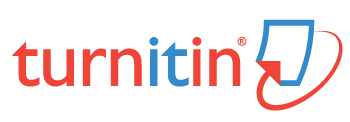PEMBELAJARAN DENGAN MEDIA POHON LITERASI UNTUK MENINGKATKAN KEMAMPUAN LITERASI PESERTA DIDIK KELAS I SDN SIDOREJO I TUBAN PADA TEMA PERISTIWA ALAM DAN SUBTEMA BENCANA ALAM
Keywords:
literacy skill, tree literasi, primary schoolsAbstract
Literasi be one benchmark to determine the quality of education and human resources of a country. Indonesia compared to other Asian countries is included in the sequence below related to literacy. Accordingly, one of the primary schools in Tuban Regency, SDN Sidorejo I has low literacy skills. This is obtained from the result of literacy ability on prasiklus with an average of 13.5. The study aimed to improve literacy ability with tree literasi. Literature tree is chosen because it can build the creativity of learners that includes the power of thought and creativity, and motivate students to always read. In addition, the literacy tree is very simple and easy to implement. Literate trees are expected to improve the literacy ability of learners. This research is the Classroom Action Research (CAR) conducted in two cycles, with each cycle consisting of four phases of activity: (1) planning, (2) action, (3) observation, and (4) reflection. The subjects were students of class I SDN Sidorejo I Tuban Semester II Academic Year of 2017/2018. The instruments used in the research are syllabus, learning implementation plan, observation sheet, and literacy skill test. Based on the results of research and data analysis, it can be concluded that the literacy of students in grade I SDN Sidorejo I Tuban has increased with the media literasi tree. In prasiklus, participants' literacy skills are said to have a low category with an average of 13.5. In cycle I, literacy ability of participants is said to have low category with average is 39,2. In cycle II, literacy ability of participants is said to have medium category with average is 55.
Downloads
References
Arsyad, A. 2009. Media Pembelajaran. Jakarta: Rajawali Pers
Bamford, A. 2001. The Grammar within the world of Interactive Media. Education Researh Network Conference on Learning (8th, Spetses, Greece). 1(1):1-10.
Bybee, R., B. McCrae, & Laurie, R. 2009. PISA 2006: An Assessment of Scientific Literacy. Journal of Research in Science Teaching, 46(8): 865-883.
Diana S. Implementasi Strategi Peer Assisted Learning (PAL) untuk Meningkatkan Literasi Anatomi Mahasiswa Calon Guru Biologi. Proceeding Biology Education Conference. 13(1): 554-563.
Khoirudin, A., Setyawati, R.D., & Nursyahida, F. 2017. Profil Kemampuan Literasi Matematika Siswa Berkemampuan Matematis Rendah dalam Menyelesaikan Soal Berbentuk PISA. AKSIOMA. 8(2): 33-42.
Ma’sum. A. 2014. Profil Kemampuan Penalaran Matematis Siswa dalam Menyelesaikan Soal Bangun Ruang Sisi Lengkung. Prodi Pendidikan Matematika. STKIP PGRI Jombang.
Maryanto, M. D. 2006. Quantum Seni. Semarang: Dahara Prize.
National Research Council (NRC). 1996. National Science Education Standarts. Washington: National Academy Press.
OECD. 2000. PISA 2006: Science Competencies for Tomorrow’s World. (Online) (http:// www.oecd.org/dataoecd/15/13/ 39725224. Pdf), diakses 09 November 2014.
OECD. 2009. A Framework for PISA: Assessing Scientific, Reading, and Mathematical Literacy: OECD Publishing.
OECD. 2013. Survey International Program for International Student Assessment (PISA). (Online) (http: // www.oecd.org/pisa), diakses 01 Juni 2015.
Olasehinde, M.O. 2015. Promoting the Reading Culture towards Human Capital and Global Development. English Language Teaching, 8(6). Published by Canadian Center of Science and Education. Nigeria.
Palmer, M.S. & Tatiana M. 2015. Learning to See the Infinite: Measuring Viual Literacy Skills in a 1st year Seminar Course. Journal of the Scholarship of Teaching and Learning. 15(1) : 1-9.
Probosari, R. M., Sajidan, Suranto, & Prayitno, B. A. 2016. Dampak Inkuiri Berjenjang terhadap Dimensi Literasi Sains Calon Guru Biologi. Proceeding Biology Education Conference.
Rizkita L., Suwono, H., & Susilo. H. 2016. Analisis Kemampuan Awal Literasi Sains Siswa Sma Kota Malang. Seminar Nasional II Kerjasama Prodi Pendidikan Biologi FKIP dengan Pusat Studi Lingkungan dan Kependudukan (PSLK) Universitas Muhammadiyah Malang.
Sagala, S. 2012. Supervisi Pembelajaran. Bandung : Alfabeta.
Sidhartani, S. 2016. Literasi Visual sebagai Dasar Pemaknaan dalam Apresiasi dan Proses Kreasi Visual. Jurnal Design, 3(3):155-163.
Sudjana & Rifai, A. 2002. Media pembelajaran. Sinar Baru. Algenindo Bandung.
Trowbridge, L. W., & Bybee, R. W. 1996. Teaching Secondary Schooll Science Strategies For Developing Scientific Literacy. Englewood; New Jersey; Columbus; Ohio: Merrill an Imprint of Prentice Hall.
Walker, M. 2011. PISA 2009 Plus Results : Performance of 15-year-olds in reading, mathematics and science for 10 additional participants. Melbourne: ACER Press.
Winata, A., Cacik, S., & Widyawati, I. S. R. 2017. Pengembangan Petunjuk Praktikum IPA Berbasis Literasi Sains untuk Calon Guru Sekolah Dasar. Seminar Nasional Hasil Penelitian dan Pengabdian








